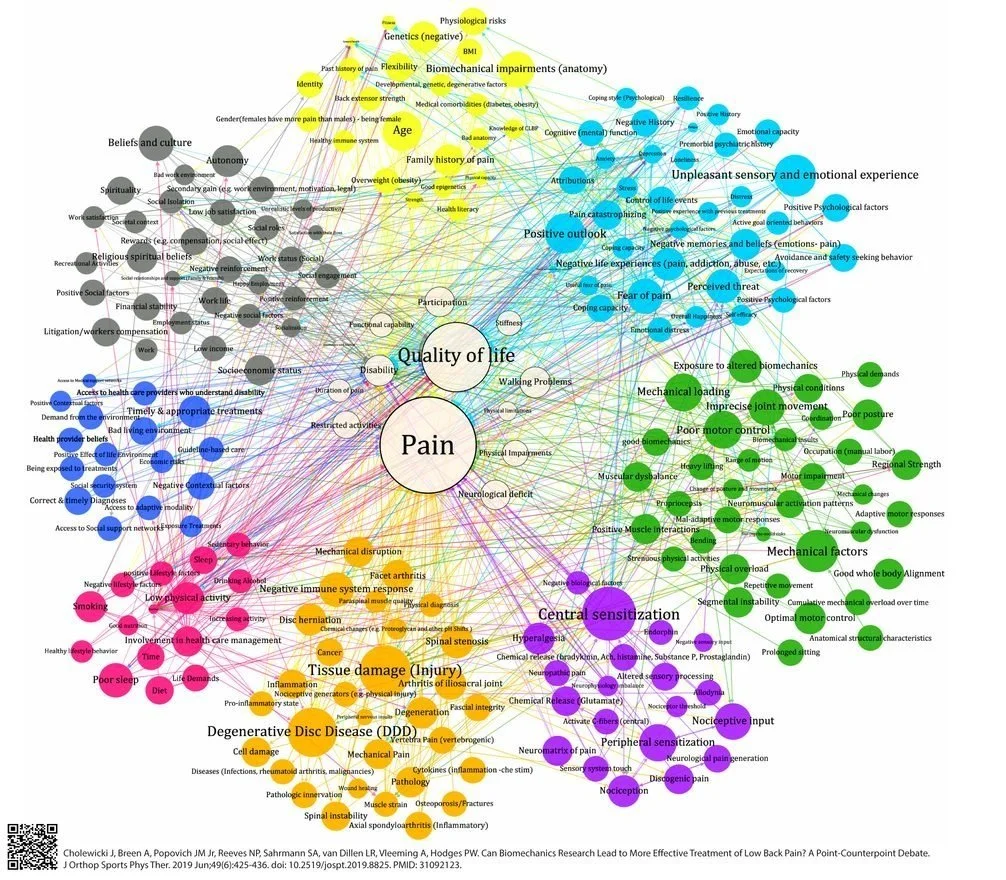WHY IS BIOMECHANICS IMPORTANT?
Disclaimer: This isn't designed to be health/medical advice, but rather an informal way of teaching you more about how the body works. There is A LOT to consider when it comes to pain and injury. For more specific insights make a booking with us at CONNECT Osteopathy & Performance.
Pain and injury is caused by many things but today we will focus on 3 core principles of biomechanics
For those that are curious to learn more about their bodies, biomechanics and how injuries occur are some key concepts that we focus on in clinic.
Joint by Joint model - As you can see in image 2, all of our joints have a dedicated primary function. Some joints are designed to be more stable, whereas others are designed to be more mobile. For example, the hip which is a ball and socket joint is designed for rotation and movement. Whereas the knee is a hinge joint that primarily functions to be stable as it only allows the majority of its movement in one direction.
From a biomechanical point of view, someone may be more susceptible to a knee injury due to a restriction in movement at the hip. If force is travelling down to the hip and the hip can’t rotate due to a lack of mobility, the knee may result in 'taking up the slack' and assisting with the rotation, even when it’s not designed to rotate.
Load mitigation - Think about a desk worker and their hip as an example. Typically, they spend the majority of their working day sitting and performing their work tasks. Then they might get in the car, get home and sit on the couch for the rest of the evening day in and day out.
As the muscles that surround the hip are always flexed in this example, the desk worker may accumulate load in the front of the hip as they don’t have the opportunity to ‘spread’ the load effectively. In this instance, the knee might even be called in to assist if the hip isn’t working as well as it can. Exercises such as lunges, squats and even walking will help expose us to hip extension and ranges that oppose the flexed hip position (seated position).
Proximal to Distal - When I work with clients, I quite often start with improving function closer to the midline of the body before working outwards (pelvis and ribcage). If we go back to the hip example we discussed above, our hip will always be reliant on what our pelvis is doing. By creating awareness of pelvic position, we can increase the hips capacity to move, which can then flow down and help with knee function. We use similar principles in the upper body when it comes to shoulder and elbow health. We would typically look to improve movement and function at the middle back & ribcage before focusing more specifically on the shoulder joint.
I hope that you learned something! Again, this isn’t an exhaustive list of biomechanics but some of the principles we use and keep in mind when we work with clients at CONNECT.
References
Cholewicki, J., Breen, A., Popovich, J. M., Jr, Reeves, N. P., Sahrmann, S. A., van Dillen, L. R., Vleeming, A., & Hodges, P. W. (2019). Can Biomechanics Research Lead to More Effective Treatment of Low Back Pain? A Point-Counterpoint Debate. The Journal of orthopaedic and sports physical therapy, 49(6), 425–436. https://doi.org/10.2519/jospt.2019.8825


